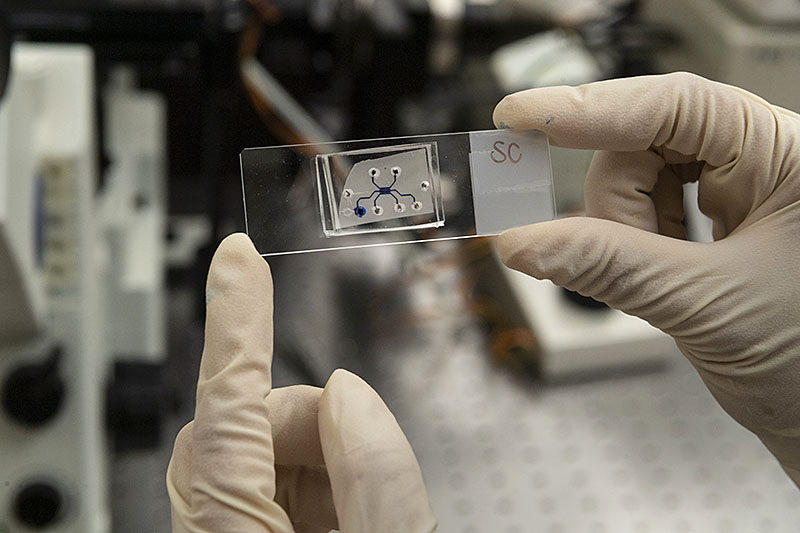What if we could go 'back in time' and reverse that process?
Purdue University Professor Bumsoo Han and his team built is a lifelike reproduction of a pancreatic structure called the acinus, which produces and secretes those digestive enzymes into the small intestine. The goal is reprogram the cancerous acinar cells that produce those enzymes, and perhaps completely reset the pancreas.
The reset button might a gene called PTF1a. It's vital to the pancreas. Without it, you don't have a pancreas at all. Researchers typically investigate possible pancreatic cancer treatment approaches in animal models, but it can take months for pancreatic cancer to develop in an animal. Having a way to study cancer development and treatment concepts in a microenvironment that is just as realistic would save time and give researchers more control over the model.

In this microscope slide, researchers recreated two anatomical structures involved in the spread of pancreatic cancer. Image: Purdue University/John Underwood
The model that Purdue researchers developed overcomes a major challenge in accurately capturing the anatomical complexity of the acinus, a circular cavity lined with cells. Here’s how it works: The model, a postage stamp-size glass platform on top of a microscope slide, has two interconnected chambers. Loading a collagen solution into one chamber fills the finger-like shape of a pancreatic duct, which bulges and then expands to create the cavity structure of the acinus in the second chamber.
Dropping cancerous human cells into the acinar chamber made the model even more realistic. Konieczny’s lab engineered the PTF1a gene of a pancreatic cancer cell line to turn on in the presence of doxycycline, a compound commonly used in antibiotics. Once the gene was activated, the cells started constructing the rest of the acinus in Han’s model, indicating that they were no longer cancerous and had been reprogrammed.
“In this model, not only do the cancerous cells become reprogrammed, but for the first time, we’re able to show the normal three-dimensional architecture of the acinus, which looks very similar to the same structures we see in a healthy pancreas,” said Stephen Konieczny, professor emeritus in Purdue’s Department of Biological Sciences.






Comments